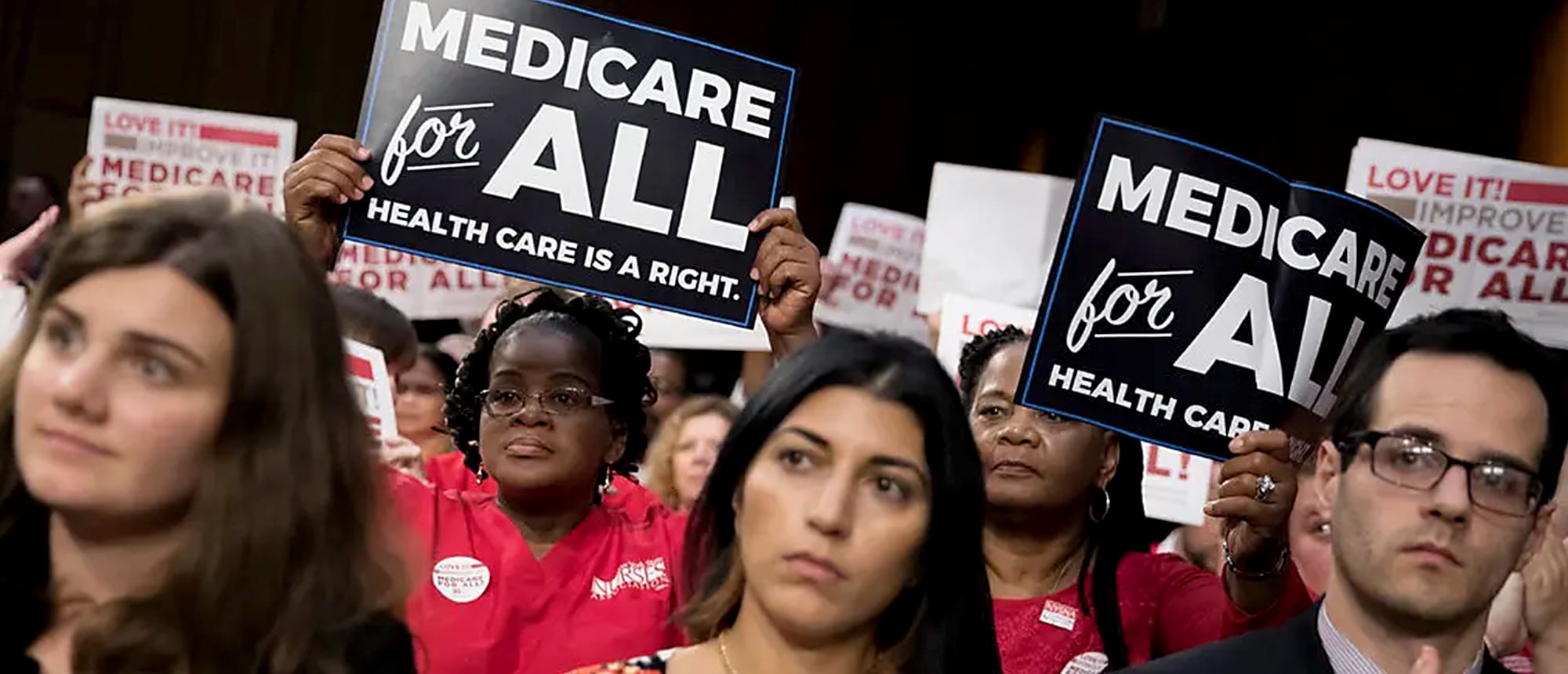Now That Everybody Is For Medicare For All, Opponents Say Let’s Dilute It
A strange phenomena has appeared in the US debate over universal healthcare: a big majority favors a well-known reform—Medicare for All—as the pundits, insurance and pharma lobbyists, and political insiders denied it (since 1992!), then since 2016 opposed it and all of sudden want to re-define it.
The appearance of Medicare for All in the New York Times just before the New Year—as the subject of an in-depth Robert Pear story on December 29th, the type of work he consistently devotes to the hottest healthcare issues in Washington, but rarely has done so about MFA—and in a letters to the editor special on the 30th, featuring readers remedies for the healthcare system, “not surprisingly,” said the Times, Medicare for All “topped the list.”
The Pear story presented the first mainstream journalist examination of Medicare for All in relation to Medicare Advantage, the commercial insurance plans sold as Part C of Medicare, which are the latest hugely profitable windfall carve out of traditional Medicare for insurers, who market them to healthy seniors to fuel their double digit growth projections for these products. In return for an additional payment from the Medicare SMI Fund per enrollee, insurers like Humana, United Health, CIGNA, and Kaiser restrict seniors to a limited set of providers and provide more comprehensive benefits than Part B plans—typically vision, hearing aids, and dental—some incorporating Part D prescription drug benefits, and lower or no co-pay and deductibles.
Ironically, though this approach naturally attracts new enrollees, taxpayers are subsidizing a less efficient, more expensive version of what advocates mean by Medicare for All—an improved version that eliminates co-pays and deductibles for current Medicare recipients and everybody else. It also eliminates those narrow networks that restrict access, closes the co-pay requirements in prescription benefit Part D, lowers prescription drug prices by 40% according to a recent study, and provides comprehensive benefits including dental, vision and hearing with choice of provider (no surprise medical bills!). To say “pre-existing conditions” are covered is an understatement.
So when the Times‘ Pear concludes his article with a quote from John C. Gorman that we should do “Medicare Advantage for All,” allowing the insurance companies to determine payment for care but heavily regulated “like utilities,” he posits a false “third way” that would still allow the insurers to set the providers we can access, how long we are in a hospital, when procedures, prescriptions and tests are covered, all based on their business model. And, of course, this assumes the insurers would go along with “heavy regulation” of their profits.
In light of the almost approved merger of CVS-AETNA, the new Buffet-Bezos-Dimon joint benefits corporation, and consolidation of hospitals into regionally dominant corporate chains, financing healthcare through Medicare Advantage plans as Gorman suggests, would establish another corporate silo, subjecting our health to the dictates of profit and market share, subsidized by our taxes.
Those looking for a silver bullet—like an individual buy-into Medicare for those 55 and over, which relieves the insurers of having to cover their most expensive patients, and undermines the social insurance model of Medicare, or the Medicare Advantage model—only highlight how much existing Medicare is already privatized. In addition to Parts C and D described above there are the Part B out patient and co-pay plans costing $134/mo for most. True enough and likely the cause for why low-income seniors will be paying 40% of their income on average for healthcare by 2030. In truth, Medicare needs to be improved by un-doing all the cost-sharing seniors, like workers, increasingly bear.
Perhaps not surprisingly, these Medicare Advantage plans are hugely popular in Congress. GOPers and Democrats like the lower cost/broader benefit package, and who wouldn’t, especially if it doesn’t disrupt your donors business, and you can dole out dollars to them? As long as corporate money funds elections, and the healthcare industry has seemingly endless monies to buy lobbyists and make contributions, individually or through PACs, we cannot expect the Democratic leadership to lead for what we need.
Only a mass social movement can overcome the huge resource and political advantages of the medical-industrial complex. It requires elected officials having to choose between voters and donors – and creating an overwhelming demand that forces them to accede to fundamental reform. To be clear, that means guaranteed healthcare for all with no barriers to care.

